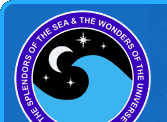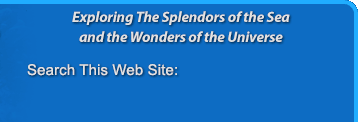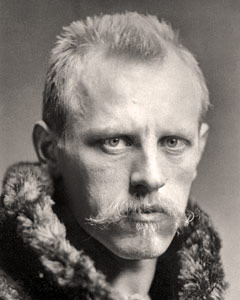
Fridtjof Nansen
1861 - 1930
Norwegian explorer, oceanographer, diplomat, and Nobel Peace Prize laureate.
Made the first crossing of the Greenland interior.
Won international fame after reaching a record northern latitude of 86°14' during his North Pole expedition.
Recognized as a great humanitarian for helping missions of war refugees.
Fridtjof Nansen was a Norwegian explorer, oceanographer, humanitarian, diplomat, and Nobel Peace Prize laureate. He was born on October 10, 1861 in Store Frøen, near Oslo, Norway and was one of three children. His father was a lawyer with a distinguished record of public service. Nansen's childhood was shaped by his surroundings. Swimming and fishing were the main activities during the short, Norwegian summers. During the winter, hunting game in the forest and skiing became the chief pastimes. This mainly outdoor life allowed the children to develop their physical skills. Nansen became an expert skier and was able to embark on long journeys of as much as 50 miles with a minimum of gear. In school, he excelled in science and drawing. He entered the University of Oslo in 1881 and decided to major in zoology because it would enable him to spend more time outside in the open air. In 1882 he had an opportunity to sail to Greenland aboard the sealing vessel Viking. During the four-month trip, he took notes on winds, ocean currents, ice movements, and animal life, including seals and bears. His thorough notes were accompanied by finely detailed sketches. After he returned to Norway, he was offered the post of curator of the natural history collection at the Bergen Museum. He accepted the job and spent six years of intensive study at the museum. His chosen field of study was the central nervous system of lower marine creatures. In 1887 his paper on The Structure and Combination of Histological Elements of the Central Nervous System earned him his doctorate degree.
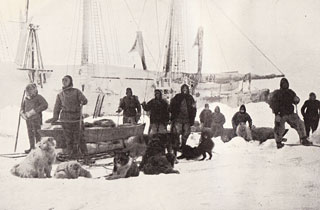
Fram for their expedition in 1895
For many years, Nansen had been thinking about a plan to cross Greenland. The interior of the great island had never been explored. His daring plan involved crossing from the uninhabited east to the inhabited west. This meant that once his party was put ashore, there would be no turning back. This fit perfectly with his "all or nothing" attitude. The party of six left for the expedition in June of 1988. The sealing ship Jason took them from Iceland to the east coast of Greenland. For two months the party braved temperatures as low as -49° F (-45° C) and climbed as high as 9,000 feet (2,743 meters) above sea level. They emerged on the west coast of Greenland in October of 1888. The difficult trip revealed important information about the island's interior. The expedition returned to Norway and the men were treated as national heroes. Nansen spent the next four years as curator of the Zootomical Institute at the University of Oslo. During this time he published several articles and began planning a scientific expedition to the arctic. He believed that an east-west current existed that could carry a ship close to the North Pole. His plan was to sail a strong ship north until it froze in the ice, and then ride the ice pack west toward the pole. He would then use sleds to attempt to reach the North Pole. Nansen spent three years preparing for the journey. An unusually strong ship was built called the Fram. In June 1893 the party of twelve left with enough provisions for six years. The ship sailed east and entered the ice pack off the coast of Siberia. The well-designed ship held up against the ice and they floated in the current westward toward the pole. For nearly two years the ship floated in the ice pack. On March 14, 1895 Nansen and one other crewmember left the ship on a sled and made their way north towards the pole. After traveling 140 miles (225 km), they made it as far as 86°14', closer than anyone else had ever come, before turning back. They finally returned in August, 1896. Their ship, the Fram, arrived one week later after a journey of over three years. During that time the ship performed valuable scientific observations.
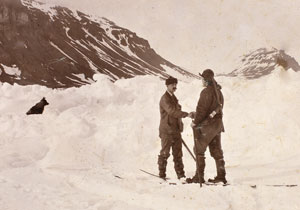
When Nansen and his crew returned home to Norway they were welcomed as heroes. Nansen spent most of his time engaged in scientific work. He eventually published six volumes of research based on his arctic expedition aboard the Fram. In 1905 he became involved in politics and helped Norway gain their independence from Sweden. Afterwards, he became Norway's minister to Great Britain. During the next few years he led several oceanographic expeditions to the polar regions. But in 1914 his research was halted by World War I. He served important political positions, helping his native Norway during the war and helping to repatriate over 450,000 prisoners of war. He became famous for his humanitarian efforts, helping refugees from many war-torn nations. In 1921 he helped direct relief for millions of Russians who were dying from a famine. It is estimated that he may have saved up to 22 million people. In recognition for his selfless charitable work, he was awarded the Nobel Peace Prize in 1922. He continued his work assisting war refugees until he died on May 13, 1930. He passed away peacefully at his home near Oslo. Nansen helped to change the course of history in his native Norway. He has been honored in many countries all over the world for his work helping people in need. He was truly one of the greatest explorers and humanitarians of his time.
